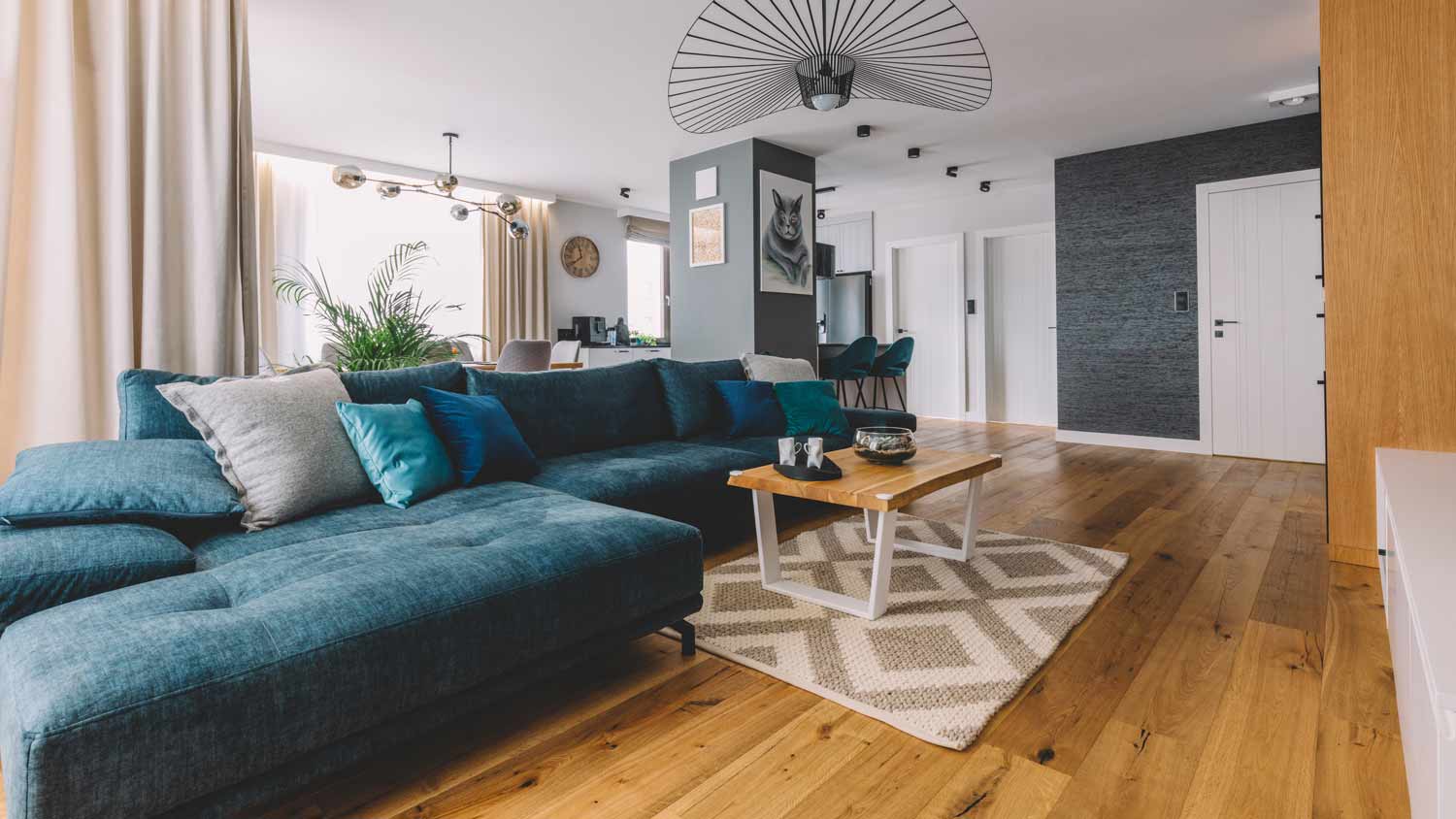What’s the Best Flooring for Bathrooms? Here Are 5 Durable Picks
You don’t have to splash out to get a long-lasting flooring material


When it’s time to replace your bathroom flooring, you need a material that holds up well against moisture and humidity. So, what are your options when it comes to picking the best flooring for a bathroom? Tile is a classic choice, while vinyl is a budget-friendly pick. Or, you could go with something like natural stone or polished concrete—both of which bring a sleekness to your space. Below, we’ll walk through the basics of these bathroom-friendly flooring types, including the pros and cons of each one.
| Material | Average Cost per Square Foot (Including Installation) |
|---|---|
| Ceramic tile | $7–$44 |
| Porcelain tile | $8–$44 |
| Natural stone | $10–$350 |
| Stained concrete | $2–$16 |
| Vinyl | $6–$18 |
1. Ceramic Tile
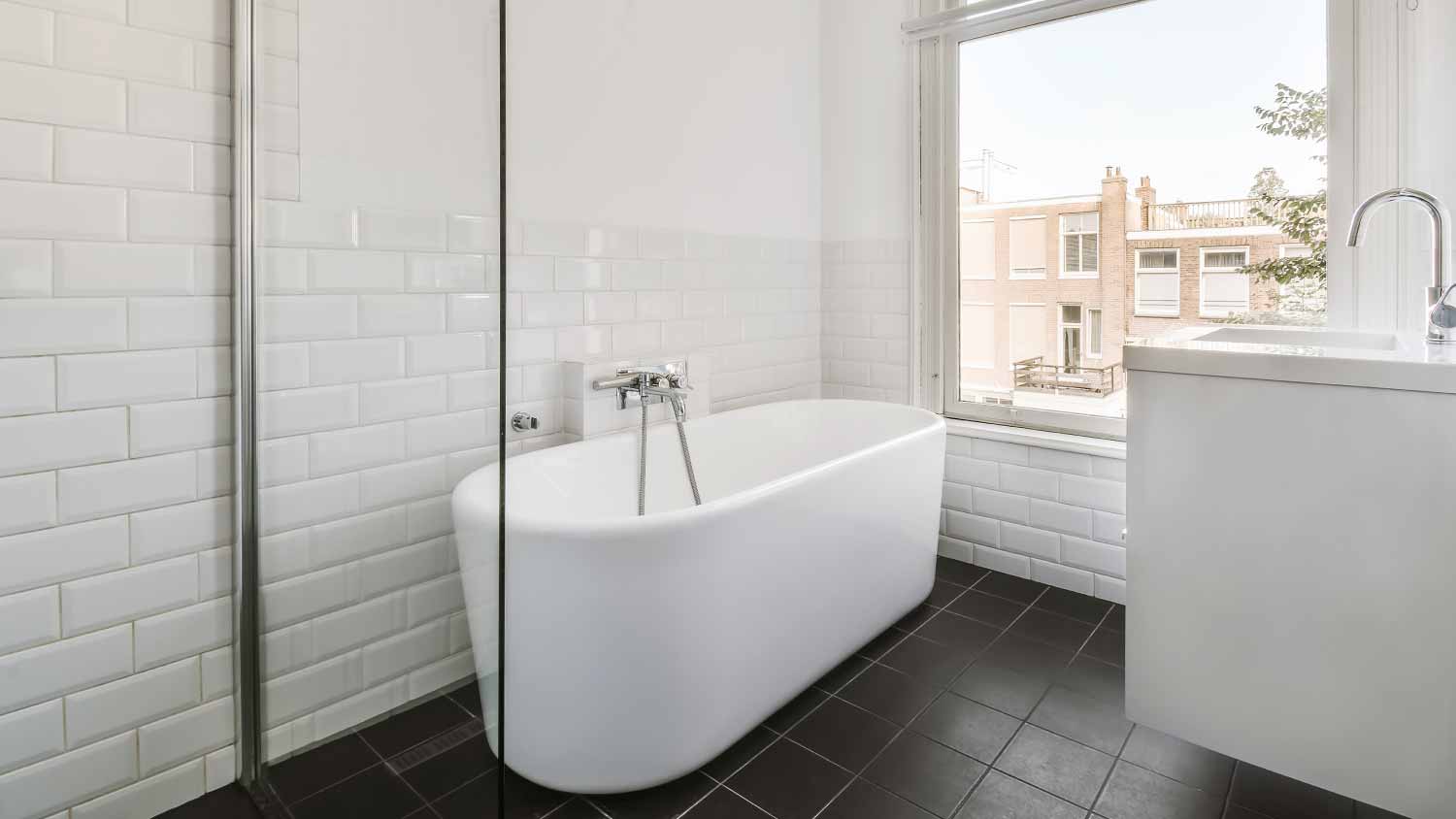
Ceramic is a popular type of bathroom floor tile made from clay and heated at high temperatures until hard. It’s water-resistant, durable, and low-maintenance, and it comes in various colors, styles, and shapes. Plus, ceramic tiling is more affordable than higher-end flooring materials (like natural stone).
If you’re the DIY type, you may be able to install a ceramic tile floor yourself. On average, this type of bathroom flooring costs $2 to $30 per square foot for the materials alone (not including labor). Keep in mind, though, that installing flooring can be taxing no matter what material you choose, so it’s never a bad choice to hire a pro.
| Pros | Cons |
|---|---|
| Easy to clean | Less water-resistant than porcelain |
| Withstands water and humidity | Can get slippery |
| Lots of design options | Feels hard and cold underfoot |
Best for: Anyone looking for an affordable, easy-to-install flooring option
2. Porcelain Tile
Porcelain is a type of ceramic tile. (It’s also made from natural clay and hardened under high heat.) However, the main difference between ceramic and porcelain tile is that the clay in porcelain tile is finer and denser than ceramic. It’s also baked at a higher temperature and pressure.
In terms of aesthetics, porcelain looks a lot like ceramic. However, it’s stronger, more durable, and better at repelling water, which makes it slightly pricier than ceramic. The price of porcelain tile installation ranges from $880 to $3,000, for an average cost of $1,900 per project. Porcelain’s density also makes it harder for DIYers to work with, so if you’re considering using it in your bathroom, you’ll want to hire a professional to install it.
| Pros | Cons |
|---|---|
| Dense and strong | Hard to install |
| Highly water-resistant | Surface can be slippery |
| Can take wear and tear | Pricier than ceramic |
Best for: People who like natural-looking flooring that requires minimal maintenance
3. Natural Stone
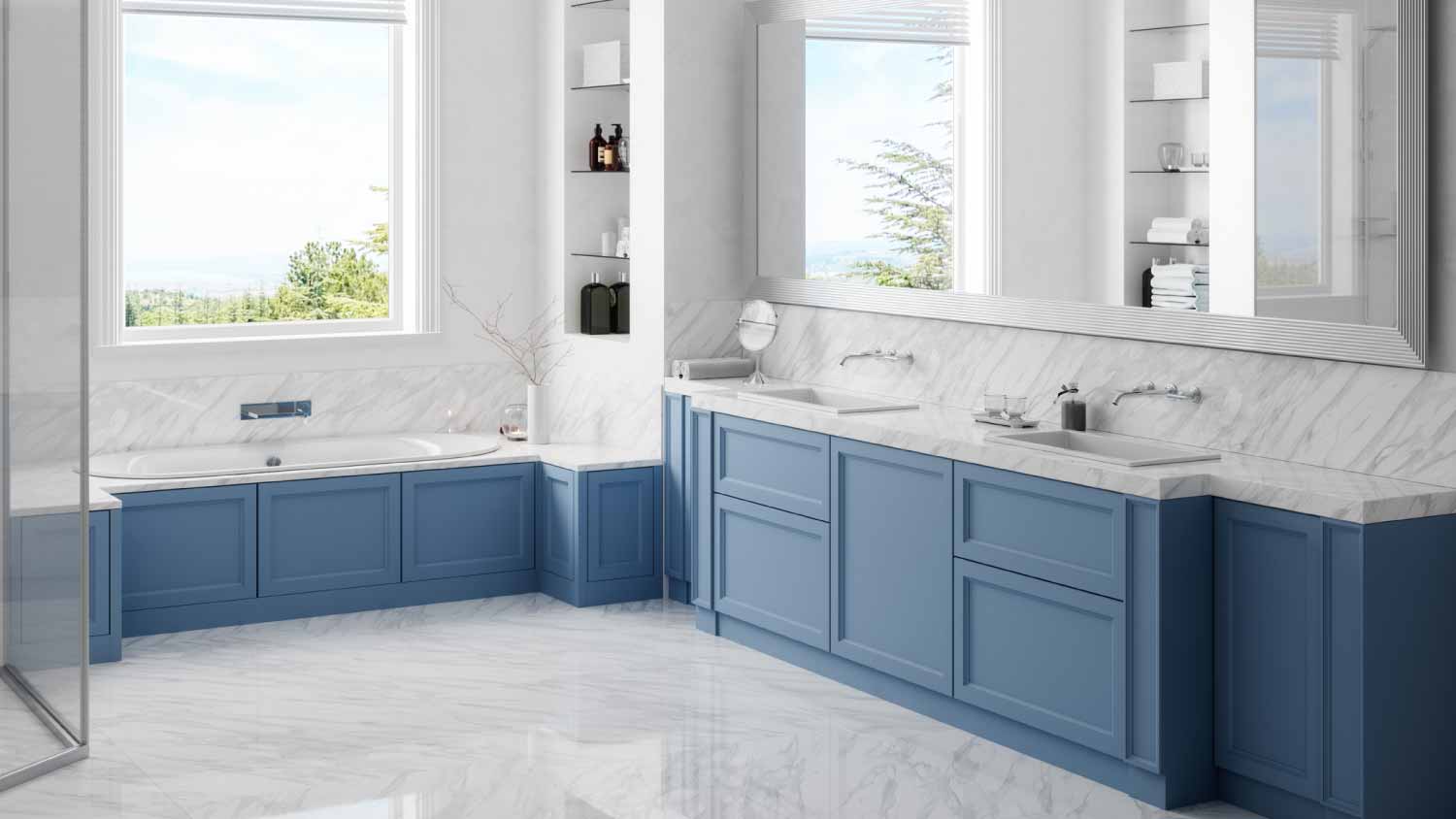
Natural stone flooring is hard, long-lasting, and holds up well against moisture and foot traffic—all while adding a sleek, luxurious look to your bathroom. Because it comes from natural stone blocks, this type of flooring is sustainable and recyclable, making it an eco-friendly addition to your home.
There are many types of stone to choose from, including marble, granite, slate, and limestone. Prices depend on the kind of stone, but natural stone as a whole is more expensive to install than most other types of bathroom flooring. However, stone often lasts longer than other flooring materials (although it may need to be resealed periodically to prevent staining).
If water soaks into natural tile, like marble or granite, it’s time to have the tile professionally cleaned and sealed so that the stains don’t cause permanent discoloration or other unsightly damage.
| Pros | Cons |
|---|---|
| Attractive, natural look | More expensive |
| Long-lasting | Installation can be challenging |
| Withstands moisture and humidity | May scratch or stain |
Best for: Folks who want high-end, natural flooring and don’t mind a bit of upkeep
4. Polished Concrete
If you’re aiming for a more modern aesthetic, you might consider installing a polished concrete floor in your bathroom. These glossy floors are waterproof, low-maintenance, and easy to clean. The downside is that they can get slippery when wet, so you may want to use anti-slip bath mats or apply a slip-resistant coating when installing the floor.
Polishing a concrete floor is complicated and requires expensive equipment, so it’s best to leave this job to a professional. On average, polishing concrete floors costs between $1,000 and $8,000, with most people spending around $4,500. Since bathrooms are small spaces, your project cost will likely be on the lower end of that range. If your existing concrete needs repairs (or you need to pour a new slab), your costs will increase.
| Pros | Cons |
|---|---|
| Tough and durable | Can become slippery when wet |
| Resists mold and mildew | Installation isn’t DIY-friendly |
| Sleek, modern look | Uncomfortable to stand on |
Best for: Individuals who prefer a contemporary aesthetic
5. Vinyl
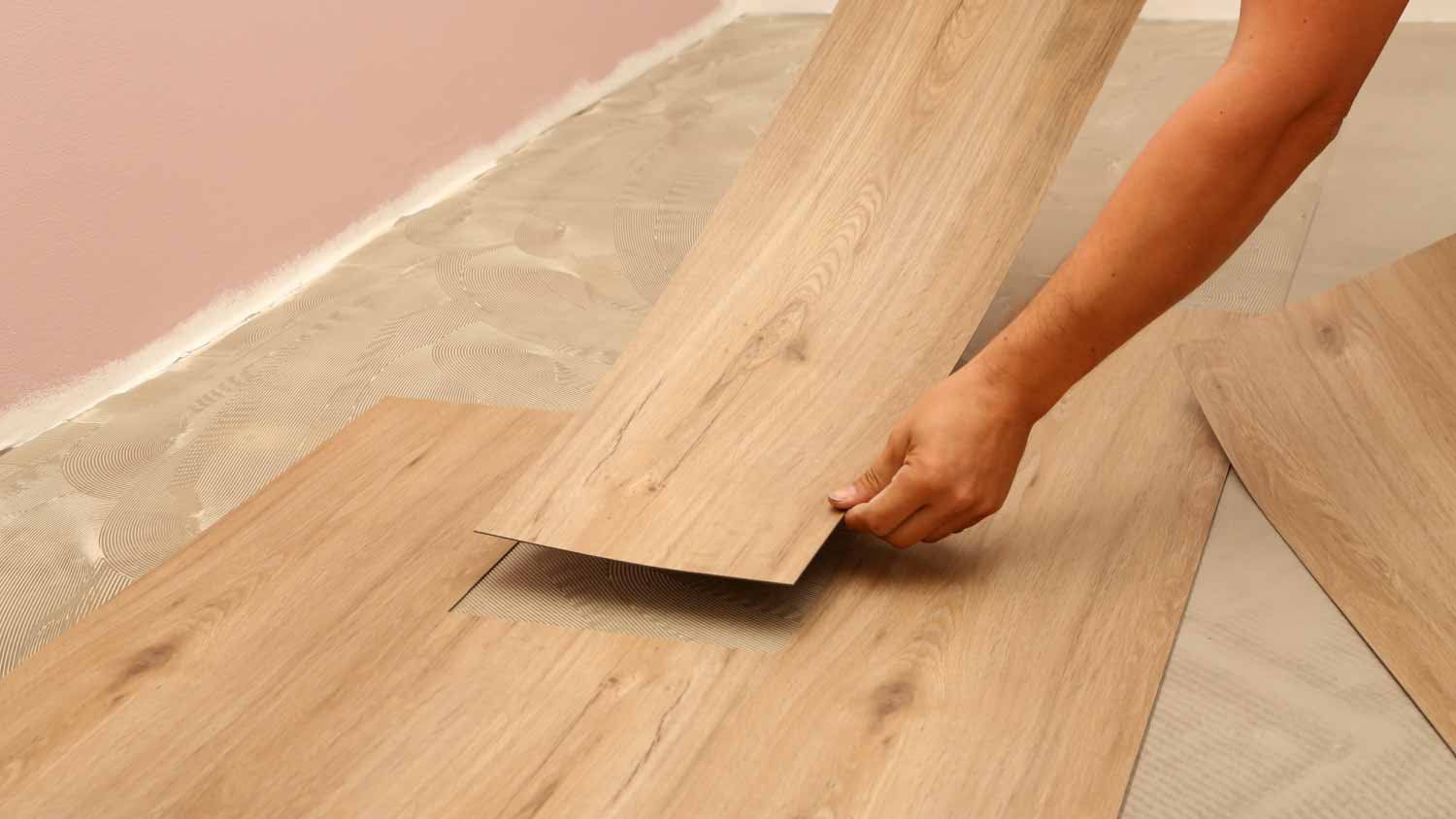
As one of the most affordable bathroom flooring options, vinyl is popular with budget-conscious home renovators. It’s sold in plank, sheet, and tile form, and it comes in all kinds of styles and patterns, with some designed to mimic the look of natural materials (like stone, hardwood, or ceramic).
Opt for flooring materials that are waterproof, not just water-resistant. Since water is always present in kitchens and bathrooms, it’s only a matter of time before there's a spill or overflow, and water-resistant materials don't offer the same level of protection.
Hiring a pro to install vinyl flooring costs between $1,010 and $4,120, with an average project price of $2,200. You’ll pay even less if you handle the installation yourself (unlike most of the other materials on this list, vinyl flooring is easy to install—even if you don’t have extensive DIY experience). When shopping for vinyl flooring for your bathroom, make sure to buy moisture-resistant products to prevent water damage.
| Pros | Cons |
|---|---|
| Affordable | Less durable |
| Easy to install | Not made from natural materials |
| Waterproof | Less resale value |
Best for: People looking for a wallet-friendly alternative to genuine stone or tile
Tips for Choosing Bathroom Flooring
Now that we’ve gone through the pros and cons of various flooring types, one question remains: What’s the best flooring for bathrooms? The truth is that it depends on what’s most important to you. Here’s how to pick the right type of flooring based on your preferences and priorities.
Budget: If cost matters most, consider lower-priced options like vinyl or ceramic.
DIY-friendliness: Some types of bathroom flooring are easier to install than others. If you’re hoping to tackle installation yourself, look for materials that are easy to work with, like ceramic and vinyl.
Aesthetics: Stone offers a more natural look, while polished concrete has a more contemporary feel.
Maintenance: Vinyl and concrete don’t require much maintenance, while natural stone demands the most attention.
If you’re still stuck and want an expert’s input, reach out to a local flooring company to discuss your options. They can explain which types of flooring will work best in your home and share more about the advantages and disadvantages of each kind.
Frequently Asked Questions
If you hire a professional to install a new floor, you can expect to pay between $50 and $75 per hour for labor. It takes two days on average to install a new floor as part of a bathroom remodeling project, but your timeline depends on your bathroom’s size and layout.
In terms of laminate versus vinyl flooring for bathrooms, vinyl is a better option because most types are waterproof (but laminate isn’t). If you install laminate flooring in a room with high humidity or moisture, water can get in between the planks and potentially cause them to warp or swell.

.jpg?impolicy=leadImage)

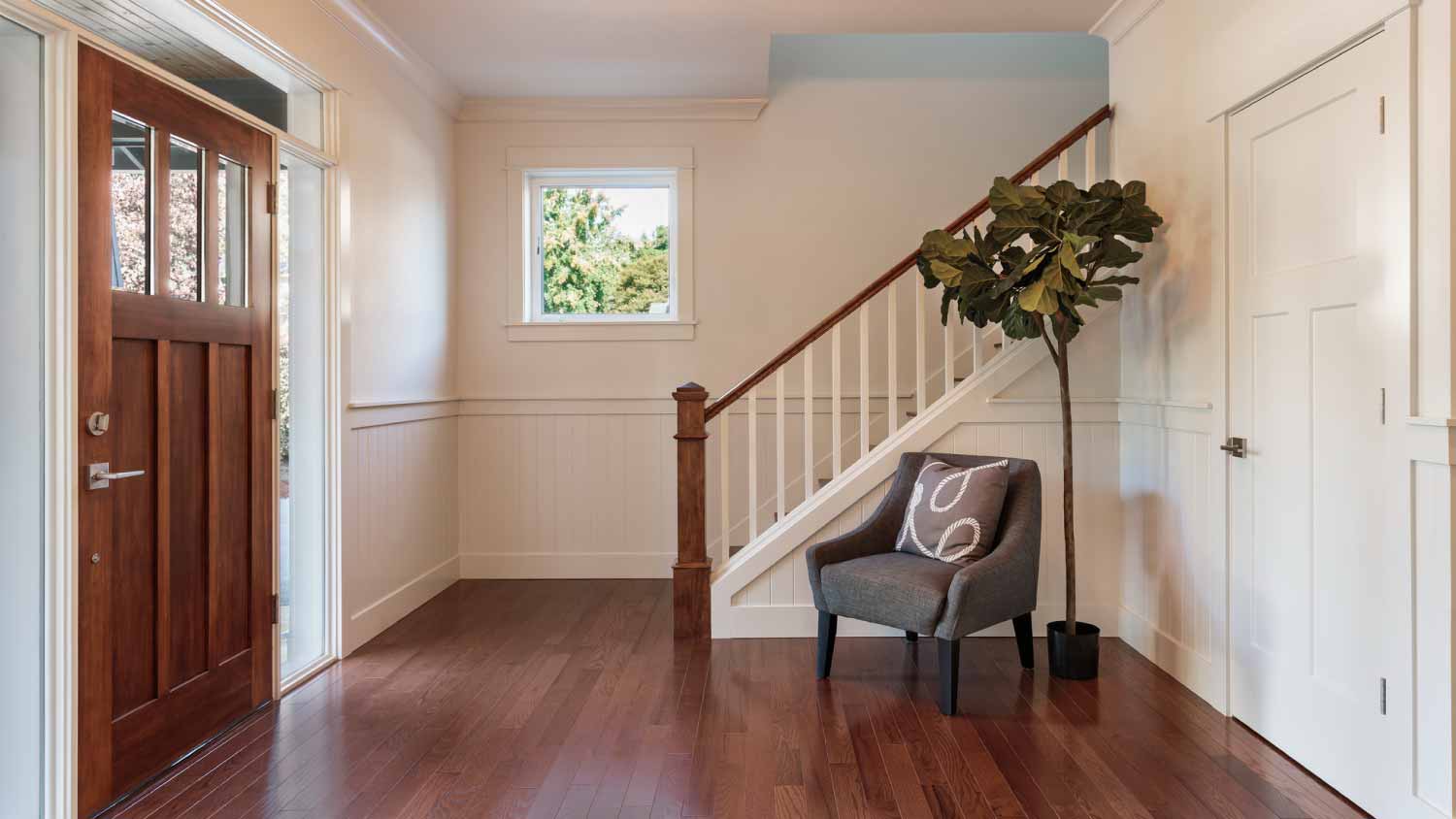

- What Is the Best Tile for Bathroom Floors?
- 11 Types of Flooring to Consider for Your Home
- Keep Moisture at Bay With These 5 Waterproof Flooring Options
- The Best Flooring Options for Dogs: A Complete Guide
- 6 Types of Flooring Perfect for Basements and Bathrooms
- Ceramic Tile Flooring Pros and Cons: Could This Be the Tile of Your Dreams?
- What Types of Flooring Can Be Installed Over Ceramic Tile?
- 6 Inexpensive Flooring Options That Look Good and Save You Money
- 6 Options For Improving Your Attic Flooring
- 7 Budget-Friendly Kitchen Flooring Options for Every Style




